
In Memoriam
Memoriam
Leif E. Andersson
×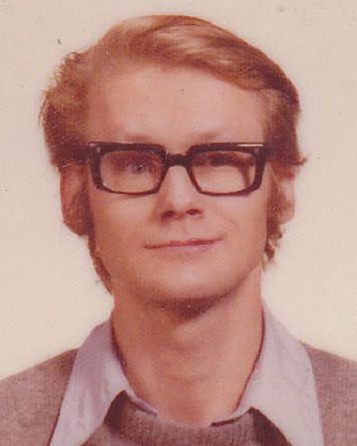
Andersson studied astronomy at Lund University, but received a scholarship to San Michele Observatory in on the island of Anacapri in Sicily in 1968.
He studied the work of Professor Åke Wallenquist, at Uppsala University. Andersson later went to Indiana University Bloomington to complete his Ph.D. degree. While there, he married Gloria Ptacek in 1973 at the Beck Chapel of Indiana University.
Andersson was hired in a post-doctoral research associate position in the summer of 1973 by Dr. Gerard Kuiper at the Lunar & Planetary Laboratory of the University of Arizona in Tucson, Arizona. Andersson calculated the first observable transits of Pluto and Charon (that took place in the early 1980s) but did not live to see them.
He mapped the far side of the moon in NASA's Catalogue of Lunar Nomenclature, with co-author Ewen Whitaker, published in 1982.
The crater Andersson on the Moon was named in his memory.
In honor of Leif Andersson's work on the determination of Pluto's pole position, the Spacewatch® Asteroid Project at the University of Arizona's Lunar and Planetary Laboratory named the asteroid 9223 Leifandersson on 24 January 2000 (M.P.C. 38198)
Leif Erland Andersson (4 November 1943 – 4 May 1979) (Wikipedia)
PermalinkKathi Baker
×
Longtime LPL staff member Kathi Baker passed away on November 8, 2014, after a battle with cancer. Kathi was originally from Yuma, but made her home in Tucson with her husband, Tom, and their 3 children, Mackinzie, Kyle, and Zachary.
Kathi began her career at LPL in 1998 as a Senior Accounting Assistant in the LPL Business Office. After a promotion to Accounting Specialist, she moved to support the LPL West Business Office in Gould-Simpson as an Accountant, Associate, in 2000. She started work with PIRL and HiRISE in 2003, and moved into the position of Administrative Associate in 2007. In 2012, Kathi accepted the position of Executive Assistant in support of the Department Head and Director, Professor Timothy Swindle.
Kathi was an active member of her faith community. She enjoyed singing and gardening, often bringing her sweet peas and snapdragons into the office when they were in bloom each spring. Kathi was a much loved member of the LPL community and will be missed by all.
PermalinkNadine Barlow
×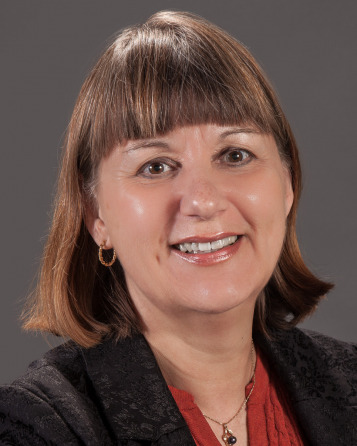
Nadine Gail Barlow passed away on August 17, 2020. Over 18 years at Northern Arizona University, Nadine ascended the academic ranks, becoming Department Chair of Astronomy and Planetary Science. She received numerous awards for teaching excellence. Doubling the size of the Department, she grew its curriculum into a Ph.D.-granting program. Nadine supervised many undergraduate and graduate students, and was a popular mentor and friend to those under her tutelage. A prize for Undergraduate Research Excellence is being established in her name. Academic outreach was a priority, bringing the Arizona Space Grant Program to NAU, and fostering cooperation between NAU, Lowell Observatory, and the USGS. Nadine specialized in impact cratering processes across the Solar System. Almost on a dare, she mapped, measured, and classified every crater on Mars larger than 8 km in diameter for her Ph.D. dissertation. These data were used to establish the detailed relative chronology of Martian geologic features. Throughout her career, she expanded this database, as later spacecraft missions returned increasingly detailed images of Mars. The IAU named asteroid 15466 Barlow in her honor.
Obituary, American Astronomical Society
Obituary, The Meteoritical Society
Obituary, Arizona Space Grant
Barlow family obituary
Lyle Broadfoot
×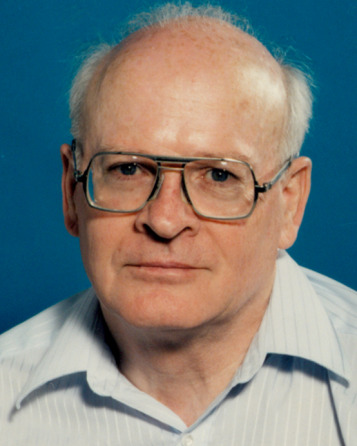
Dr. Broadfoot began his career as an engineer with the Defense Research Board in Ottawa, Canada, between 1956 and 1958. Upon earning advanced degrees, he was later hired to work at the Kitt Peak National Observatory in Tucson, Arizona, in 1963 as a junior physicist in the space division. Remaining with the organization for 15 years, he also served as an assistant physicist, associate physicist and physicist. In 1979, Dr. Broadfoot became a research scientist and associate physicist at the Space Engineering Research Center at the University of Southern California in Los Angeles. Then in 1982, Dr. Broadfoot was hired by the University of Arizona in Tucson as a senior research scientist in the Lunar and Planetary Laboratory, where he remained for 21 years before retiring in 2003.
PermalinkAlastair Cameron
×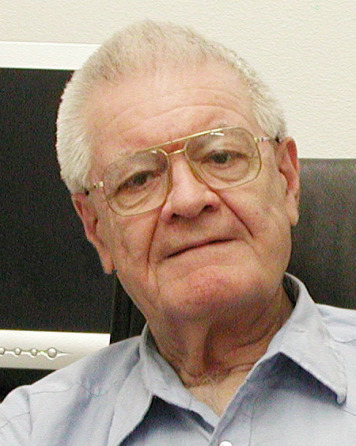
Alastair G.W. (Graham Walter) Cameron, 80, one of the great astrophysicists of the 20th century, died of heart failure in Tucson, Ariz., on Oct. 3.
Cameron, was born June 21, 1925, in Winnipeg, Manitoba. He sought to unlock the fundamental mysteries of the universe, the stars and the solar system. His public service influenced the course of the U.S. planetary exploration program over the past few decades.
Cameron did fundamental research in astrophysics, planetary sciences, and meteoritics. He was among the first to develop the theory of nucleosynthesis the production of the chemical elements in stars and to advocate that the formation of the moon resulted from a giant impact on the early Earth by an object at least the size of Mars.
Cameron was a scholar, researcher, advisor, editor and distinguished member and fellow of many prestigious and leading scientific organizations and associations. He was a member of the U.S. National Academy of Sciences and a fellow of the American Academy of Arts and Sciences and of the Royal Society of Canada. Cameron was also a fellow of the American Association for the Advancement of Science, the Meteoritical Society, and the American Geophysical Union.
Among his many advisory roles, Cameron said his most important was as chairman of the Space Science Board of the National Academy of Sciences from 1976 to 1982.
He spent 26 years of his academic career at Harvard University beginning in 1973 as associate director for planetary sciences at the Harvard-Smithsonian Center for Astrophysics and, later, as head of Harvard's astronomy department. He was named professor emeritus at Harvard University and appointed the Donald H. Menzel Research Professor of Astrophysics in 1999, a position he held at the time of his death.
At the time of his death he was also a senior research scientist in the Lunar and Planetary Laboratory at The University of Arizona. He was a member of the Arizona Senior Academy in Tucson, which is a non-profit organization devoted to life-long learning, thinking and doing.
Cameron's research interests included nucleosynthesis and associated areas of nuclear physics, stellar evolution, supernova explosions, neutron stars, star and planet formation, physics of planets and planetary atmospheres. He considered the main objective of his scientific research was to understand the structures and origins of astronomical objects and systems.
"As I look back on the account of my research career, I am struck by how fortunate I have been in the timing of my research opportunities. My training was in nuclear physics, and the field of nuclear astrophysics opened up just at the right time for me," he said in Adventures in Cosmogony, a retrospective of his career as he approached his retirement published in 1999.
He became a leader and innovator in the application of emerging computer technology for solving astrophysics problems.
He was a champion for academic freedom and a proponent for government funding to support basic research as a means to further technical development and applied research in many areas of knowledge, including the sciences.
Among his many awards and medals of recognition for his contribution to the sciences was the R.M. Petrie Prize Lecture Award from the Canadian Astronomical Society in 1970, the NASA Distinguished Public Service Medal, awarded in 1983, the J. Lawrence Smith Medal from the National Academy of Sciences in 1988, the Harry H. Hess Medal from the American Geophysical Union in 1989, the Leonard Medal from the Meteoritical Society for his outstanding contributions to the science of meteoritics in 1994, and the Russell Lecturer prize from the American Astronomical Society, awarded to him in 1997 for a lifetime of preeminence in astronomical research.
Five days before his death, Cameron was notified that he had also been named the 2006 recipient of the Hans A. Bethe prize from the Division of Nuclear Physics of the American Physical Society "for his pioneering work in developing the fundamental concepts of nuclear astrophysics. These basic ideas, laid out almost 50 years ago, are still the basis of current research in this field," the society said.
His numerous published works spanned decades. His last research article, "Some Nucleosynthesis Effects Associated with R-Process Jets," was published in 2003 in the Astrophysical Journal.
Cameron began his career as an undergraduate at the University of Manitoba, Canada, during the final years of World War II. Later he earned a doctorate in nuclear physics at the University of Saskatchewan, with renowned Canadian physicist Leon Katz as his thesis advisor.
In between the two degrees, he worked at Chalk River, Ontario, on the atomic energy project of the National Research Council of Canada. He continued his academic career with an assistant professorship at Iowa State College, applying nuclear physics to astrophysical problems. He later returned to Chalk River before immigrating to the United States in 1959, when he worked at the California Institute of Technology. He was among the first to be hired by NASA's newly established Goddard Institute for Space Studies in 1961 and took a leading role in organizing scientific conferences, which helped give the institute an academic flavor.
He was a visiting lecturer at Yale for six years from 1962, when he became involved in many branches of science, including nuclear physics, astrophysics, geophysics, planetary science and meteoritics.
He moved to the Belfer Graduate School of Science of Yeshiva University in New York in 1966 before joining Harvard seven years later.
His grandfather, C.N. Bell, was an officer of the Winnipeg Grain Exchange for many years. His father, A.T. Cameron, was a professor of biochemistry at the Manitoba Medical College. Cameron was predeceased by his wife Elizabeth in 2001. He is survived by his sister, Janet Matthews; his niece, Valerie Matthews Lemieux; her husband, Ron Lemieux, and their family of Winnipeg.
The Arizona Senior Academy held a memorial service for Cameron in Tucson on Oct. 11.
Alastair G. W. Cameron, 80, Theorist on Creation of Moon, Dies
Alastair Cameron, 80; Developed ‘Giant Impact’ Theory of Moon’s Origin
Alastair Graham Walter Cameron
Alastair Cameron (1925–2005)
Interview of Alastair Cameron by Patrick McCray on 2003 February 10, Niels Bohr Library & Archives, American Institute of Physics, College Park, MD USA
Alex Dessler
×
Alex Dessler passed away at age 94 on April 9, 2023. He was born on October 21, 1928 in San Francisco, CA. He earned his B.S. in physics at the California Institute of Technology in 1952 and his Ph.D. in physics at Duke University in 1956. He then became, over time, a founding father of space science research and education in the United States and in the world.
During his postdoctoral years 1956-62 Dessler was a senior scientist at the Lockheed Missiles & Space Co. in Palo Alto, CA. The U.S.–U.S.S.R. race to put a man on the Moon in the 1960’s motivated Rice University president Kenneth Pitzer to bid for the country’s first university department of Space Science, and to hire Alex Dessler to become that department’s architect and founding chair. Dessler chaired the new department from 1963-69 and again in 1979-82 and 1987-92. The department was renamed Space Physics & Astronomy in the 1970’s. Dessler brought the Keller method of self-paced instruction to the Rice campus and demonstrated its utility in college-level science teaching. He took leave of absence from Rice during 1982-86 to successfully direct the Space Science Laboratory at NASA’s Marshall Space Flight Center in Huntsville, AL. Otherwise, although he travelled widely, Dessler stayed with Rice until his retirement from the teaching faculty in 1993.
In 2000 the Space Physics & Astronomy department was absorbed by the much larger Physics department to produce today’s even larger Physics & Astronomy department. After his Rice retirement Dessler took a Research position at Univ. AZ to continue his fruitful collaboration with Prof. Bill Sandel (Rice Space Science Ph.D.,1972), the Voyager 1 and 2 ultraviolet detector investigator. When the time came for Alex to really (sort of) retire in 2007, he moved to Bryan, TX to accept an adjunct professorship at TX A&M Univ., where his son Andrew was and is a professor in the Atmospheric Science Department.
In the late 1950’s Dessler set off on a research career to study the behavior of magnetized plasmas in space, using insights gained from the relatively new science of magnetohydrodynamics (MHD). In the paper by Dessler (1959) he elucidated how the non-dipolar “anomalies” in Earth’s surface magnetic field carve out measureable holes in the velocity-space distributions of energetic charged particles trapped in Earth’s Van Allen radiation belts. (Literature citations are given in the appended list of selected publications.) More than a mere curiosity, these “magnetic anomaly” effects provide critical tools for analyzing the dynamics of Earth’s magnetosphere. The same dynamics reappeared with new relevance 15 years later when the focus of Dessler’s studies switched from Earth’s magnetosphere to Jupiter’s (Dessler & Hill, 1975).
In the same year, Dessler & Parker (1959) summarized the available empirical knowledge of the geomagnetic storm phenomenon known to science since Gauss’s studies of geomagnetism in the nineteenth century, and offered a comprehensive physical theory of the storm phenomenon based on the recently discovered principles of MHD. Applications of this storm theory led to innovative estimates of the maximum particle energy content of Earth’s radiation belts (Dessler & Vestine, 1960), and of the energy source provided by geomagnetic storms to power Earth’s magnificent auroral displays, called the aurora borealis/australis at northern/southern high latitudes.
The classic review paper by Dessler (1967) summarized and analyzed the historical evolution of ideas about the solar wind and its embedded interplanetary magnetic field. It also introduced the concept of the heliosphere (and coined its name), described the formation of corotating interaction regions (CIRs) within the solar wind, bounded by forward and reverse collisionless shock waves (Dessler and Fejer, 1963), and described the termination of the solar wind at its outer boundary, the heliopause (Axford, Dessler, and Gottlieb, 1963).
Dessler and his first graduate student David Cummings (Cummings and Dessler, 1967) showed that new satellite observations of magnetic field fluctuations at high latitudes are best explained by the magnetic-field-aligned electric currents hypothesized in 1908 by Norwegian explorer and physicist Kristian Birkeland. This was a momentous discovery for auroral physics, and it inspired Dessler (1984) to introduce his American and British colleagues to the fundamental discoveries of Birkeland near the turn of the century and of Swedish plasma physicist Hannes Alfvén (Physics Nobel Prize, 1970) during the following half century. The physics behind these Birkeland currents was elucidated by Dessler and published by Schield, Freeman and Dessler (1969).
The role of ionospheric conductivity in regulating the flow of the solar wind around Mars was elucidated by Dessler (1968) and generalized to Earth and Venus by Hill, Dessler & Wolf (1976). These ideas figured prominently in many later studies of the flow of magnetospheric plasma past conducting planetary satellites like Io at Jupiter (e.g., Dessler, 1980) and Enceladus at Saturn, as well as the rate and pattern of plasma “convection” (systematic motion) within a planetary magnetosphere.
Shortly after the first spacecraft encounter with Jupiter (Pioneer 10 in December 1973), Hill, Dessler & Michel (1974) elucidated many of the observable features of a rotation-dominated planetary magnetosphere that were exhibited first by Jupiter and much later by Saturn. Dessler & Hill (1975) extended the magnetic-anomaly model that Dessler (1959) had developed for Earth, to Jupiter, where the effects of the magnetic anomaly are far more dramatic and decisive. Dessler (1980) also pointed out the likely dominance of planetary satellites over the solar wind or planetary ionosphere as plasma sources for a planetary magnetosphere, particularly for a rotation-dominated magnetosphere like those of Jupiter and Saturn. He coined and popularized the term “one ton/second” for Jupiter’s magnetospheric plasma source rate provided by its volcanically active satellite Io.
Finally, Dessler & Vasyliūnas (1979) and Vasyliūnas & Dessler (1981) provided a masterful demonstration of the traditional scientific method at work. In the 1979 paper they gave a detailed set of theoretical model predictions for the forthcoming Voyager 1 encounter with Jupiter, and in the 1981 paper they gave an objective scorecard after the fact. Never mind the score; the important point is, that’s how science works when it works best.
Alex Dessler was preceded in death by daughter Valerie Dessler Greider (1957- 2015) and his wife Lorraine Dessler (1928-2021). He is survived by sons David and Andrew, daughter Pauline, five grandchildren, and three great-grandchildren. He will be remembered fondly by all who knew him. Memorial contributions may be sent to the "Dessler-Greider fund for Physics and Astronomy" at Rice University.
Obituary: Alexander J. Dessler (1928-2023) | T. W. Hill (pdf)
PermalinkMichael J. Drake
×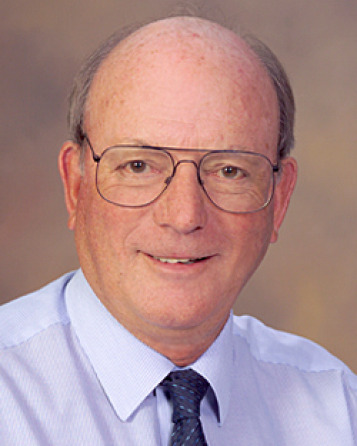
Michael J. Drake (1946-2011) attended Victoria University (Manchester) where he received a Bachelor of Science degree in Geology in 1967. He earned his Ph.D. in Geology at the University of Oregon in 1972. After a year as a postdoctoral research associate at the Smithsonian Astrophysical Observatory, he migrated to the University of Arizona.
Drake's breadth of research expertise led to his achieving the rank of Professor in the Lunar and Planetary Laboratory (LPL), the Arizona Research Laboratories, and the Department of Geosciences at the University of Arizona. He was appointed Head of the Department of Planetary Sciences and Director of the Lunar and Planetary Laboratory in 1994, a position he held until 2011. He was appointed as Regents’ Professor in 2005. Under his leadership, LPL successfully built and flew a variety of spacecraft instruments including the Imager for Mars Pathfinder, the Descent Imager/Spectral Radiometer (DISR) on Cassini/Huygens, the IMAGE Extreme Ultraviolet Imager, and the Gamma-ray Spectrometer Suite on Mars Odyssey. In addition, LPL scientists were selected as Team Leaders on the Visible and Infrared Mapping Spectrometer on the Cassini mission and the High-Resolution Imaging Science Experiment on Mars Reconnaissance Orbiter. During his tenure, LPL built the Surface Stereo Imager and Robotic Arm cameras and the TEGA instrument on Phoenix, and successfully operated Phoenix on the Martian surface from the University of Arizona campus.
Professor Drake was named a fellow of the Meteoritical Society in 1980, the American Geophysical Union in 2002, and the Geochemical Society in 2002. He was a founding fellow of the Arizona Arts, Sciences and Technology Academy. He served as Vice President then President of the Meteoritical Society from 1997-1998 and the Geochemical Society from 1996-1999. He was awarded the Leonard Medal of the Meteoritical Society in 2004. Asteroid (9022) 1988 PC1 was named Drake in his honor by Carolyn Shoemaker. Professor Drake played a key role in defining the planetary science research priorities of the United States, serving on the NASA Space Science Advisory Committee, the Lunar Exploration Science Working Group and as Chair of the NASA Solar System Exploration Subcommittee, among many other service commitments.
Professor Drake developed the OSIRIS-REx Asteroid Sample Return mission concept. His leadership of the OSIRIS-REx team was instrumental in its success of moving into a selected flight mission project. The scientific goals of the mission are to investigate the possibility of asteroid delivery of prebiotic molecules to Earth and Mars, to connect the meteorite collection to the astronomical asteroid spectral database, to investigate near-Earth resources that may be used by humans going to the Moon and Mars, and to improve our ability to mitigate against devastating near-Earth object impacts. As the mission leader Drake established the OSIRIS-REx guiding philosophy of obtaining excellence at every level, allowing for clear and open communication across all levels of the team, and staying focused on the mission objectives.
Read more about Professor Drake: Regents' Professor Michael J. Drake, 1946-2011
New York Times: Michael J. Drake, Planetary Scientist, Dies at 65
Arizona Daily Star obituary
Remembering Mike Drake
Gerard Droege
×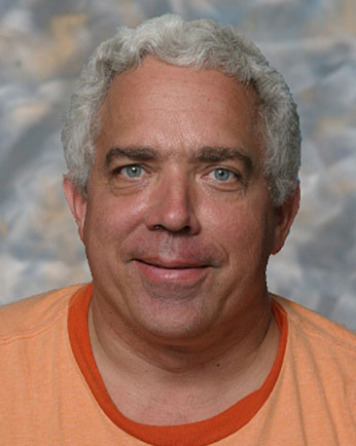
We regretfully forward the sad news of the death of LPL staffer and Boynton team member Gerard Droege. Jerry's colleague and friend, Bill Boynton, remembers Jerry:
"Jerry was an amazing man. He came to LPL in 2006 after retiring from his medical practice and joined my group as a NASA Space Grant Intern. He worked on the Phoenix TEGA instrument and later worked on data analysis of the Lunar Exploration Neutron Detector, a Russian made high spatial resolution neutron detector on LRO.
"Jerry had nearly 20 years practicing as an OB/GYN before he decided to go back to school to learn a new field. He loved his job here even if he had to put with my regularly introducing him as my gynecologist.
"Jerry was an avid sailor (lived on a sailboat while practicing in San Diego), hiker (conquering Aconcagua), and juggler. He even has a certificate from Guinness Book of World Records for the `Most Prepositions at the End of a Sentence.' He will be missed greatly by all who knew him."
PermalinkTom Gehrels
×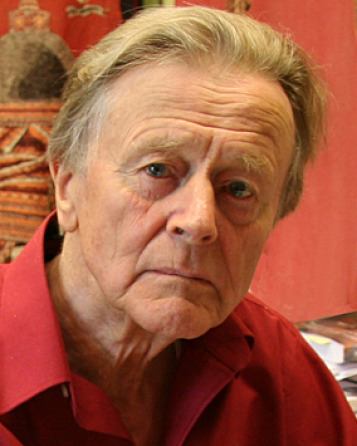
Tom Gehrels was a noted planetary scientist and astronomer. He spent nearly his entire academic career at the University of Arizona, from 1961 until his death on July 11, 2011. Although he could have retired 20 years ago, he remained a dedicated teacher and researcher until the end of his life. Just a few months before his passing, in April 2011, he was honored by the University for his 50 years of service as an academic.
During his academic career he discovered literally thousands of asteroids and comets, and the results of his research are widely published. In 2007, the American Astronomical Society’s Division of Planetary Sciences presented Gehrels with the Harold Masursky Award for scientific contributions during his career.
Gehrels was born in Haarlemmermeer, the Netherlands, on February 21, 1925, near the current location of Schiphol Airport. Following the Nazi invasion of the Netherlands in 1940, Gehrels joined the resistance movement and later was able to escape to England for further training. He was trained in Britain’s Special Operations Executive and was parachuted into the Netherlands to sabotage and spy on the German activities in his native land. He was fortunate to escape capture because the German anti-spy operations were quite effective at identifying subversives and spies among the population. If captured he would almost certainly have been executed.
Following the war, Gehrels was able to continue his studies. In 1948, he applied for admittance to the University of Leiden, was accepted and graduated in 1951 with a degree in physics and astronomy. He then continued his graduate studies at the University of Chicago where he was awarded his doctorate in astronomy and astrophysics in 1956.
While at Chicago, Gehrels was able to work with Nobel prize winner, astrophysicist Dr. Subrahmanyan Chandrasekhar and with Dr. Gerald Kuiper. Dr. Gerald Kuiper, a fellow Dutchman was a noted and famous astronomer then [see his biographical profile in this collection]. However, Dr. Chandrasekhar was the one who had the most influence on Gehrels’ development as a scientist and astronomer.
Following graduation, Gehrels joined the University of Indiana in Bloomington, Indiana for a post-doctoral fellowship. While at Indiana, he focused on the study of asteroids. Asteroids are chunks of rock, some as large as miles in diameter, and some as small as the size of an automobile which travel through space, and occasionally crash into the Earth’s atmosphere.
In 1960 Dr. Kuiper joined the University of Arizona [UA] to establish the UA Lunar and Planetary Laboratory. A year later, Gehrels followed Kuiper to Tucson, and joined the faculty of planetary sciences and astronomy at the UA. He would remain there for the next 50 years.
In 1980, Gehrels started the Spacewatch® Project which uses telescopes at Kitt Peak, near Tucson, to survey the sky for asteroids, especially the more dangerous ones. Gehrels is also the founder of the highly respected Space Science series, published by the University of Arizona Press. He served as the editor of the series for 30 volumes.
In recent years Dr. Gehrels has focused his research on cosmology and universal evolution. He published an original paper in the area entitled, “The Multiverse and the Origin of Our Universe”.
Professor Gehrels was the father of Neil, George and Jo-Ann Gehrels, all graduates of the University of Arizona. Neil Gehrels is an astrophysicist and is currently the Chief of the Astroparticle Physics Laboratory at NASA’s Goddard Space Flight Center.
Professor Tom Gehrels: 50 years at the UA
Astronomer Tom Gehrels, 1925-2011
'They Threw Away the Mold' When They Made UA Astronomer
Floyd Herbert
×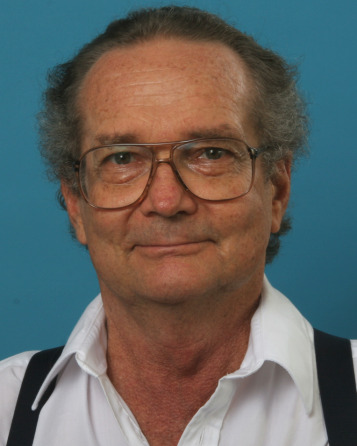
Senior Staff Scienstist Floyd Herbert, a long-time member of the LPL family, passed away on May 12, 2010. He was born in Orange, California and lived throughout California as a child. He graduated from CalTech and then moved to Tucson where he received his Ph.D. in physics from the University of Arizona. Floyd worked at Kitt Peak, briefly at the Planetary Science Institute, and then at the Lunar and Planetary Laboratory.
His research was focused on magnetic fields interacting with asteroids, Io, and in his last work, extra-solar planets. An example of his innovative work was his 1979 paper in "Icarus,'' with Charles Sonett, then director of LPL, on the heating of asteroids by strong magnetic fields and solar winds. The Herbert-Sonett model offered an explanation of why some moderate-sized bodies, like Vesta, have once-melted igneous surfaces, while larger bodies, like Ceres, appear to have unmelted primitive surfaces. This difference had not previously been explained. The subject of asteroid heating has been somewhat dormant in recent years, but tests of Floyd's ideas may come with the DAWN mission, now sailing toward Vesta and Ceres.
Memorial for Floyd Herbert
Floyd Herbert Obituary
Michael Hicks
×
Michael David Hicks of Sunland, CA passed away on July 30, 2023, at 59 years of age. He worked at JPL as a NASA postdoc and then as research scientist from 1998 until 2022. Born in Dayton, Ohio, Michael earned degrees from Boston University and a PhD in Lunar and Planetary Science at the University of Arizona. His research specialty was the physical properties of comets and asteroids. He served on the science teams of the DART Project, the Near Earth Asteroid Tracking (NEAT) Project, the Dawn Mission, and the NASA Deep Space 1 Mission. He was the author of over 80 peer-reviewed scientific papers.
Michael’s passion for science was coupled with a deep appreciation of art. He pursued projects in visual media, from woodblock prints to oil painting to metalwork, and he played the ukulele. His performances were a regular occurrence during observing runs at Mount Palomar.
He is survived by his father Richard, six brothers and sisters, daughter Julia, and ex-wife Brunella Bigi.
Division for Planetary Sciences obituary
PermalinkDwight Thomas Hoxie
×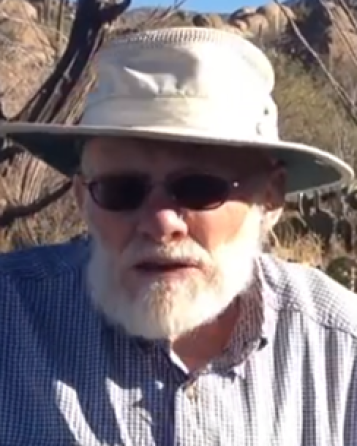
Dwight Thomas Hoxie, 87, passed away on December 27, 2024.
Dwight Hoxie completed his Ph.D. in Astronomy in 1969. His dissertation was titled The Structure and Evolution of Stars of Very Low Mass.
PermalinkDonald Hunten
×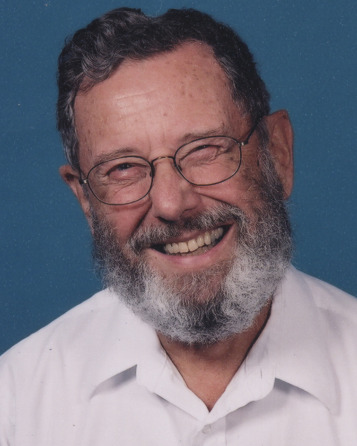
On December 14, 2010, University of Arizona Professor Emeritus Don Hunten died after a long illness. During his last days, he was tended by his wife and UA Senior Research Associate Ann Sprague.
On February 25, 2011, LPL hosted a celebration of the life of Donald M. Hunten. Steven Bougher, Darrell Strobel, Mark Sykes, and many other colleagues, friends, and family members were in attendance.
Hunten's scientific career began with the study of physics at McGill University, where he obtained a doctorate in 1950. While a faculty member at the University of Saskatchewan, his research concentrated on the study of aurorae (natural light displays in the sky caused by the collision of charged particles directed by the Earth's magnetic field).
By 1963 however, the space age was starting in earnest. At the invitation of Joe Chamberlain, Hunten moved to Kitt Peak National Observatory in Tucson to join the newly-formed space research group and his main research interest switched to the study of planetary atmospheres. Thus, he joined the first group of pioneers in the scientific exploration of the solar system and he was to be a leading figure in this community for nearly half a century.
The accomplishments of these pioneers were remarkable, including the first characterizations of the atmospheres in our solar system along with development of the basic understanding of the structure and chemistry of these atmospheres and the experimental and theoretical tools used to study them. Many of the ideas developed during that time are still with us today and Hunten's contributions were central to their development.
A signature achievement during this phase of his career was an understanding of how odd hydrogen chemistry stabilized the atmosphere of Mars against destruction by photodissociation. Hunten moved to the UA's Lunar and Planetary Laboratory in 1977, and his involvement in planetary research continued unabated. He also taught numerous students and post-doctoral associates.
Hunten retired in 2001 but remained active until recently. He received many honors during his career, including induction into the National Academy of Sciences, the Kuiper Prize of the Division of Planetary Sciences of the American Astronomical Society and a Regents' Professorship at the UA.
One of Hunten's most far-reaching achievements concerned the role of diffusion in atmospheric escape processes. "Don's Principle," as this is sometimes known, described how the escape rate was limited by diffusion of the escaping species through the background atmosphere.
Typical for him, the theory was formulated in response to an observation, the detection of molecular hydrogen in Titan's atmosphere, when it was expected to have a very low abundance because of rapid escape. The theory was developed in a series of papers between 1972 and 1974, including an application to the escape of hydrogen from the terrestrial atmosphere — one of the best examples of how studying other planets leads to a better understanding of our own.
Hunten was a major influence on the unmanned space program with involvement in the planning and execution of numerous NASA planetary missions including Pioneer Venus, Voyager, Galileo and Cassini. In fact, he was the godfather of so many missions that he was dubbed by his colleagues "The Don."
In addition to his direct involvement on the experiment teams, Hunten helped conceive these missions, argued for their funding, sat on (and often chaired) their planning committees, helped to define the scientific goals, and provided wise guidance during their execution.
Hunten was a scientist of extraordinary breadth. His expertise ranged across the planetary sciences from chemistry to remote sensing to thermal processes to studies of atmospheric evolution and he used a variety of tools including telescopic observations, spacecraft observations, and theoretical investigations.
A talented tinkerer, Hunten could build a harpsichord in his garage, or repair a computer with the needle-nosed pliers and soldering iron that he kept in his office, all the while with gentle classical music playing in the background. He wrote nearly as many papers on electronics as he did on atmospheric evolution.
Throughout his career, Hunten went out his way to support and encourage younger scientists. As a result, he leaves behind legions of students and collaborators that he profoundly influenced. These intellectual disciples can be found in every planetary science research center on the globe.
Hunten's textbook, co-authored with Joe Chamberlain, "Theory of Planetary Atmospheres" was treasured by many of his colleagues. This pales though, in comparison to personal interactions, through which Hunten could more directly impart his common sense approach to planetary science.
Obituary, American Astronomical Society
PermalinkSelina Johnson
×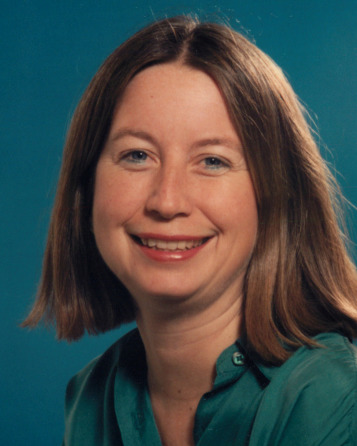
Our colleague and friend Selina Johnson passed away in December. Selina was a member of LPL's administrative staff for many years. She started at LPL as an undergraduate student in 1981, and left as a Senior Program Coordinator in 2008. Selina was lively and vivacious and we remember her big smile and hearty laugh. There was never a dull moment when Selina was in the crowd. She'll be greatly missed by all. A memorial celebration took place on February 18, 2012, at Tohono Chul Park in Tucson.
Elizabeth "Selina" Johnson died peacefully in her sleep, unexpectedly on Thursday, December 15, 2011. Selina was a loving wife and mother, survived by her husband, Glenn Johnson; her two sons, Byron and Neil; her mother, Libbie Dearing; her siblings, Michael Dearing (Debi), Robert Dearing (Vanessa), James Dearing, Mark Dearing and Stephen Dearing (Colleen); her nieces and nephews, Laura, Autumn, Ashlyn and Joshua. Selina was born July 23, 1952 in Los Angeles, CA to Libbie and Paul Dearing. She was raised in Wisconsin and Illinois. She graduated from Larkin High School in Elgin, Illinois in 1970. She earned a Bachelor of Science degree in Speech and Hearing Sciences from University of Arizona and a Masters degree in Elementary Education from Northern Arizona University. She moved to Tucson in 1972, where she met her husband of 34 years. She worked at The University of Arizona for 27 years, specializing in K-12 educational outreach. Selina was a pillar of strength in her family. We are broken hearted and will miss her smile, playful laugh and love.
PermalinkJ.R. (Randy) Jokipii
×
Our long-time friend and colleague Jack Randolph “Randy” Jokipii died on January 7, 2022. He was 82. He leaves us with many fond memories of his passion for science and education, food, and world travels. He was a major presence at the Lunar and Planetary Laboratory (LPL), playing a large role in the success of the department, educating and mentoring many students, postdocs, faculty and staff. He was often roaming the halls of the Kuiper building and enjoyed chatting about a wide variety of topics – always the great storyteller. He loved to travel and to tell of his adventures. He had over two million frequent flyer miles, and once circumnavigated the globe. He met Indira Gandhi on a trip to India, and proudly displayed a picture of the encounter in his office. Those that had the opportunity to work with him closely also remember fondly the numerous, deep, sometimes frustrating, but always productive conversations on science topics on the whiteboard in his office. Randy will be remembered for his devotion to intellectual honesty and always standing by his principles. He was a role model for younger scientists with a strong commitment to teaching physics.
Randy was born in Ironwood MI, on Sep 10, 1939. As a youth, he had a passion for astronomy, and built his own telescope, including grinding the mirror used for it. He was also proud to mention that he delivered the local newspaper in the community. He was also on the high-school ski team. He enjoyed returning to Ironwood to attend high-school reunions, including the most-recent one, his 63rd. Randy attended the University of Michigan where he earned a BSc in Physics in 1961. He attended graduate school at the California Institute of Technology, earning his PhD in Physics in 1965, working with Leverett Davis, Jr., who was a pioneer of the study of the interplanetary magnetic fields and their interaction with plasmas, such as the solar wind. During the summer of 1964, Randy worked for the Rand Corporation, and published a paper on the distribution of gases in the protoplanetary nebula. It was then that he met his wife, Bonnie. Randy then went to the University of Chicago to work with Gene Parker as a postdoctoral research associate. In 1967, he was hired as an Assistant Professor at the University of Chicago. In 1969 he moved back to California to take a position as Assistant Professor of Theoretical Physics at Caltech. In 1974, he moved to the University of Arizona, where he was hired as Professor in LPL and in the very new Department of Planetary Sciences (PtyS), with a joint appointment in Astronomy, by the new LPL director, Charles P. “Chuck” Sonett.
Randy joined LPL/PtyS at a critical point in the history of LPL. Just before Randy was hired in 1974, founder Gerard Kuiper had relinquished the LPL directorship to Sonett, an experimental space physicist working at the time on lunar magnetism with the Apollo program. Although Kuiper had conceived of the new academic department added to LPL, he was not necessarily supportive of adding faculty to do space physics theory. Kuiper died at the end of 1973, but opposition to space theory research continued to be widespread in LPL. Randy played a critical role within a small group of unofficial advisors to Sonett on the execution of a novel concept for the time: turn the observational astronomy unit LPL into LPL/PtyS, a multidisciplinary research and teaching unit operating under the rubric of solar system exploration, but staffed with observers, experimentalists, and theorists from all relevant fields, meeting the highest professional standards. With the small group of inaugural PtyS faculty, Randy designed and taught one of the first PtyS core courses for graduate students, a semester of planetary physics focused on transport theory and plasma physics. His first PtyS PhD student was Guy Consolmagno, now Director of the Vatican Observatory.
In 1975, Randy began serving as associate department head. He continued in that capacity under LPL’s next director, Bill Hubbard, who took over in 1977. Randy was a steadfast defender of the pioneering concept of LPL/PtyS as a multidisciplinary research and teaching organization, during a time of great transition and considerable turmoil. Randy also led an effort to submit a "decision package" to the Arizona legislature to fund an interdisciplinary theory program to be shared by LPL, Astronomy, and Physics. The proposal succeeded and the Theoretical Astrophysics Program was established in 1985. In 1997, Randy was named a Regents Professor in the University of Arizona. In 2001, he was elected to the National Academy of Sciences. He retired from the university in 2015, becoming Professor Emeritus. He is a fellow of both the American Geophysical Union and American Physical Society.
Randy was a pioneer in the physics of cosmic ray transport. He was a theorist, at a time when spacecraft measurements of the solar wind and high-energy charged particles were first being made. Randy’s work on charged particle transport still reverberates through the literature today. He was quite young in 1966, when he wrote the now classic paper Cosmic-ray Propagation. I. Charged Particle in Random Magnetic Fields, where he introduced the quasi-linear theory of charged-particle transport in turbulent magnetic fields like those seen in space. He was the first to relate the power spectrum of magnetic fluctuations to the cosmic-ray diffusion coefficients, which is a key parameter to understand a wide variety of physical phenomena in space, such as cosmic-ray modulation in the heliosphere, particle acceleration by shock waves, and solar-energetic particle emissions. There is an entire industry of researchers in both space physics and astrophysics using this theory. Randy started it all.
Perhaps one of Randy’s most notable scientific accomplishments was the prediction of the 22-year cosmic ray cycle. With LPL colleagues Gene Levy and Bill Hubbard, Randy wrote a famous paper describing the importance of cosmic ray drift motions. Later, in 1981, he wrote a paper that provided the physical foundation for the cosmic-ray drift motions in the heliosphere, which rather resemble a convection pattern. He noted that the drift patterns change with the solar magnetic cycle, which flips its sign every 11 years – taking 22 years to return to the same polarity.
Randy was also a pioneer in the large-scale computer modeling of cosmic ray transport. His codes reproduced spacecraft observations and led to many insights. Randy did not merely accept the numerical results without having a deep physical understanding of them. His well-regarded transport codes initially used idealized simple geometries and later extended to more-realistic geometries in numerous studies with his long-time colleague József Kóta. Randy also pioneered research into the physics of charged particle acceleration at shocks, authoring many papers on this subject. He was the first to note that shocks that move across the magnetic field accelerate particles at a much higher rate compared to those that move obliquely to the magnetic field. This is still the current paradigm, with important implications for the production of high-energy particles at astrophysical shocks such as those from supernovae, and from the Sun. He wrote many papers on the origin of so-called “anomalous” cosmic rays showing how acceleration of ionized interstellar atoms at the solar-wind termination shock naturally explains the observations. Randy also contributed to our understanding of how low-energy particles are accelerated at shocks – something referred to as the injection problem – through his collaboration with Joe Giacalone, who he hired as a postdoc in 1993 and who later joined the LPL/PtyS faculty.
Randy always remained committed to working collaboratively with other faculty in the department on research topics outside of heliophysics. For instance, working with Bill Hubbard, Randy contributed to the wave-optical theory of intensity fluctuations observed during occultations of stars by planetary atmospheres. A version of the theory was successfully applied to a Pluto occultation observed from the MMT telescope in 2007.
Randy was preceded in death by his wife of more than 55 years, Bonnie, and his son Galen. He is survived by sons Eron and Kevin.
Joe Giacalone and Bill Hubbard, with help from József Kóta, K. C. Hsieh, Marcia Neugebauer, and Neil Sheeley
LPL Memorial page for J. Randolph Jokipii
Permalink
Robert King
×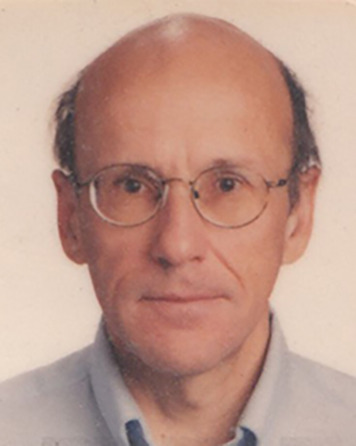
Robert A. King was born on 1/30/1947 in Winnipeg, Canada, and passed away at his home in Tucson, Arizona, on 5/27/2022. Bob was an inspiration on many fronts to all who were fortunate enough to know him professionally or personally.
Bob’s education was first in Canada and then in the U.S. He received his Ph.D. in physics from Princeton University in 1974.
From 1974 to 1976, Bob was a Postdoctoral Fellow at Bell Telephone Laboratories at Murray Hill, New Jersey. Data in support of his research was acquired at Kitt Peak National Observatory in Tucson, and at Cerro Tololo in Chile.
From 1976 to 1981, Bob was an Assistant Professor in the Physics Department at Washington University in St. Louis. He taught graduate and undergraduate students in courses in optics and quantum mechanics and relativity and conducted basic research into high frequency fluctuations in AM Hercules objects with a grant from the Research Corporation and in collaboration with Bell Telephone Laboratories.
From 1981 through 1997, Bob served as a Research Associate and Adjunct Professor in the Physics Department at the University of Calgary, Alberta, Canada. He received funding from the National Center of Excellence and the Canadian Space Agency for the design and construction of a high vacuum calibration system. He was a senior member of auroral ultraviolet imager teams for spacecraft including VIKING (Sweden) and FREJA (Canada) and INTERBALL (Russia, Canada).
While still at the University of Calgary, Bob worked with Dr. Lyle Broadfoot at the Lunar and Planetary Laboratory (University of Arizona) on the camera for Sweden’s VIKING satellite.
From 1997 through 2004, Bob worked as a Principal Research Specialist at the Lunar and Planetary Laboratory (LPL). He developed, tested, and calibrated software and also conducted development and engineering analysis in support of EUV, an extreme ultraviolet imager aboard the IMAGE spacecraft, a NASA Earth orbiter. Bob served as the entire uplink team on this project.
In 2004, Bob joined the HIRISE mission team at LPL. HiRISE, the High Resolution Imaging Science Experiment, is a high-resolution telescope aboard the NASA Mars Reconnaissance Orbiter, which launched in 2005. Bob’s work with HiRISE included calibration, software development, and engineering analysis. He coded compression algorithms, telemetry servers, image display and analysis software, and distributed telemetry displays. He also as researched the removal of image distortion and blurring engendered by S/C jitter.
Bob was a dedicated cyclist who biked to work every day, no matter the weather. Those who were lucky enough to work with Bob appreciated his computer science skills but also realized that his contributions may have been under appreciated because of his private nature. Those who came to know him better appreciated his sense of humor, positive outlook, and great love of nature and of his fellow humans.
PermalinkGerard P. Kuiper
×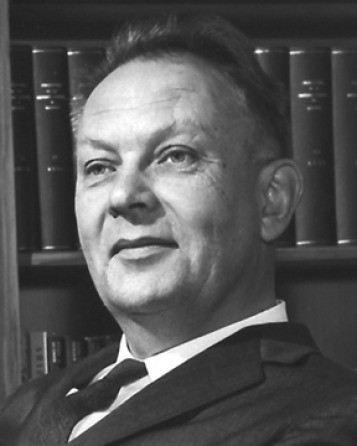
Gerard P. Kuiper (1905-1973) is considered by many as the father of modern planetary science. Kuiper was born in The Netherlands. He entered Leiden University in 1924 and received his Bachelor of Science in 1927 and a Ph.D. in Astronomy in 1933. While completing his advanced studies, he worked as an assistant observer at the Leiden Observatory (1928-1933). From 1933-1935, he was a Kellogg Fellow under American astronomer Robert Grant Aiken at Lick Observatory. In 1935, Kuiper visited Harvard College Observatory as lecturer in Astronomy. He accepted a job at Yerkes Observatory (University of Chicago) in 1936 and was named Director of the Yerkes and McDonald Observatories in 1947. He studied the atmosphere of Saturn’s moon Titan in 1944, the carbon dioxide atmosphere of Mars in 1948, Uranus’s satellite Miranda in 1948, and Neptune’s satellite Nereid in 1949.
In 1955, Gerard P. Kuiper posted a notice on the message board at the International Astronomical Union conference in Dublin; he was looking for assistance in creating a lunar atlas. The only person to reply to his inquiry was Ewen Whitaker. This was the beginning of a long, successful collaboration that ultimately produced four lunar atlases (see details below) and led the duo to work on NASA’s Ranger and Apollo missions. The work on the atlases was begun at Yerkes Observatory in the 1950s. In 1960, Kuiper resigned from Yerkes Observatory and moved to Tucson and founded the Lunar and Planetary Laboratory (LPL), where he and Whitaker continued their work.
In the 1960s, Kuiper served as Principal Investigator for the NASA Ranger program and as an experimenter on the NASA Surveyor program. He helped identify landing sites on the Moon for the Apollo program. Kuiper established a group of telescopes in the Santa Catalina Mountains above Tucson; made balloon spectroscopic observations of the Earth’s atmosphere; and conducted observatory site surveys in Hawaii, Mexico, and California. Kuiper served on numerous NASA committees and panels and briefed high government officials on features of the space program. Kuiper discovered several binary stars which received "Kuiper numbers" to identify them, such as KUI 79. Besides the minor planet 1776 Kuiper, three craters (Mercurian, lunar and Martian), Kuiper Scarp in Antarctica, and the now-decommissioned Kuiper Airborne Observatory was also named after him. Astronomers refer to a region of minor planets beyond Neptune as the "Kuiper belt" because Kuiper had suggested that such small planets or comets may have formed there. The Kuiper Prize, named in his honor, is the most distinguished award given by the American Astronomical Society's Division for Planetary Sciences, an international society of professional planetary scientists. The prize recognizes outstanding contributors to planetary science, and is awarded annually to scientists whose lifetime achievements have most advanced our understanding of planetary systems. Winners of this award include Carl Sagan, James Van Allen, and Eugene Shoemaker.
Audio recordings of and about Gerard P. Kuiper
PHOTOGRAPHIC LUNAR ATLAS / D. W. G. Arthur, E. Moore, J. W. Tapscott, and E. A. Whitaker ; Edited by G. P. Kuiper. – Chicago : University of Chicago Press, 1960. This atlas was the first of four atlases produced by Kuiper. The Photographic Lunar Atlas was compiled from the best existing telescopic images taken by five observatories: Mount Wilson (California), Yerkes (Wisconsin), Lick (California), McDonald (Texas), and Pic du Midi (France). The images show the same area in different illuminations to highlight various details. The Photographic Lunar Atlas was arranged so it could easily be used at the telescope. The images are oriented so that the Moon’s south pole is at the top, which is how observer’s see it while looking through a telescope. The atlas was printed on paper that allowed observers to write notes directly on the image while they were at the telescope.
ORTHOGRAPHIC ATLAS OF THE MOON : SUPPLEMENT NO. 1 TO THE PHOTOGRAPHIC LUNAR ATLAS / D. W. G. Arthur and E. A. Whitaker ; Edited by G. P. Kuiper. – Tucson : University of Arizona Press, 1960. This atlas was based on the images contained in the Photographic Lunar Atlas with the addition of a coordinate system defined by ~5,000 position points.
RECTIFIED LUNAR ATLAS : SUPPLEMENT NO. 2 TO THE PHOTOGRAPHIC LUNAR ATLAS / E. A Whitaker, G. P. Kuiper, W. K. Hartmann, and L. H. Spradley. – Tucson : University of Arizona Press, 1963. The Rectified Lunar Atlas was created from the negatives that were used to make the Photographic Lunar Atlas, with additional images from the Yerkes and McDonald observatories. Positive transparencies were made from the negatives and then projected onto a three-foot diameter white globe. The projected image was photographed to make the images for the RLA. This technique was employed in order remove the effects of foreshortening (distortion) on the lunar limb. The images are oriented so that north is at the top.
CONSOLIDATED LUNAR ATLAS : SUPPLEMENT NO. 3 and 4 to the PHOTOGRAPHIC LUNAR ATLAS / G. P. Kuiper, E. A. Whitaker, R. G. Strom, J. W. Fountain, and S. M. Larson. – Tucson : University of Arizona Press, 1967. The Consolidated Lunar Atlas is divided into two sections. Part one includes images taken under low-oblique lighting, which brings out features such as low domes, lava beds, and other objects of low vertical relief. Part two includes full-moon photography, which presents photometric information unavailable from even higher resolution images. The CLA images were taken at two facilities: the 61-inch NASA Telescope at Catalina Observatory on Mt. Bigelow, and the 61-inch U.S. Naval Observatory telescope in Flagstaff. Kuiper personally chose Mt. Bigelow as the site for construction of the 61-inch NASA Telescope, preferring Mt. Bigelow rather than Kitt Peak because it was higher in elevation and more easily accessible from the UA campus via the Catalina Highway. The 61-inch NASA Telescope, now named the Kuiper Telescope, was completed in 1965.
PermalinkHarold Larson
×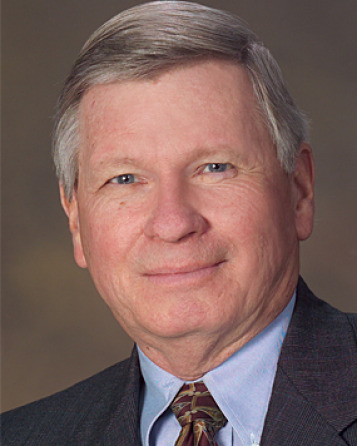
Dr. Harold Phillip “Hal” Larson passed away peacefully at his home in Tucson on 2 November 2023 surrounded by those he loved. He is survived by his wife Emma Stephens Larson and children Jonathan Larson of Tucson and Robyn Larson McCarthy of New Ipswich, N.H. and their families, including his three beloved grandsons.
Hal was born 13 July 1938 in Hartford, Conn. to Philip and Leatha Larson. He attended Manchester High School. Studying French as an undergraduate at Bates College with plans to become a high school teacher, he took a physics class and discovered a passion for delving into the secrets of the Solar System. He and Emma married in 1960 and moved to Indiana to attend Purdue University, where Hal earned his Ph.D. in physics.
Following a post-doctoral fellowship at Laboratoire Aimé-Cotton in Orsay, France, he accepted a position in the Lunar and Planetary Department at the University of Arizona. A pioneer of airborne infrared spectrometry, he led the team that discovered water on Jupiter in 1974, the first evidence that the source of life on Earth could be found elsewhere in our Solar System. Further discoveries of water in extraterrestrial environments included Comet Halley and the interstellar medium.
Hal received numerous awards both for research and for his innovative work as an educator, in particular his Einstein’s Protégés program, which reimagined how undergraduate science is taught to non-science majors. The 1985 Humboldt Prize for Senior American Scientists from the Alexander von Humboldt Foundation provided support for a sabbatical at the Max Planck Institute for Extraterrestrial Physics near Munich, Germany, where he and his family made lifelong friends. He received the University of Arizona College of Science Innovation in Teaching Award in 1996 and the Provost’s General Education Teaching Award in 1999. The same year, the Carnegie Foundation for the Advancement of Teaching named him Arizona Professor of the Year.
He was honored with the NASA Medal for Exceptional Scientific Advancement in 1998 for his contributions to the airborne science program, and one of his airborne spectrometers was acquired by the National Air and Space Museum for preservation. He was named University Distinguished Professor in 2005.
Hiking the Southwest with family and travel, concerts, and theater with his wife filled his retirement years. He enjoyed keeping in touch with colleagues and former students, repairing antique American clocks, and, most of all, countless hours spent cooking, reading, swimming, and playing games with his treasured grandsons.
The family welcomes donations in his memory to the Multiple Myeloma Research Foundation.
Permalink
H. Jay Melosh
×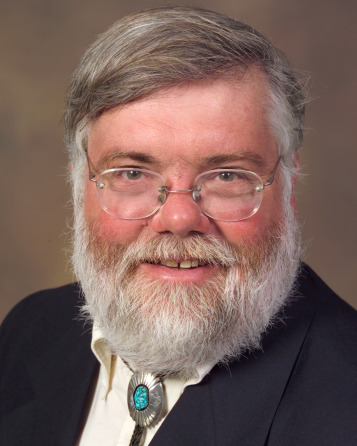
H. Jay Melosh was a trusted scientist known around the world as well as a kind and caring colleague, friend, and family man. He had a phenomenal number of publications that have changed the field for the better. He has had an asteroid named after him (8216 Melosh). He was a University Distinguished Professor of Purdue University and a Regents Professor at the University of Arizona. He was awarded the American Geophysical Union 2008 Harry H. Hess Medal - for “outstanding achievements in research in the constitution and evolution of Earth and sister planets.”
In addition to his scientific life, Jay was an avid woodworker. Over the years he made furniture, a wonderful clock and was a consignment artist at Artist’s Own, and Art Co-op in Lafayette, IN. He often commented that his most popular item he sold at Artist’s Own was seam rippers, a tool used by sewing enthusiasts. Jay and his wife Ellen built a cabin in New Mexico together. She says, "I mean literally we pounded every nail and designed it ourselves. Jay used a text from high school on building as our guide. Jay loved our little lake here on Cape Cod and spent lots of time in his small boat out on the lake." Jay also enjoyed travel, which he did extensively. He had visited every continent except Antarctica and had wonderful stories about every visit.
Jay Melosh's Online Memorial & Obituary
The Meteoritical Society: H. Jay Melosh (1947-2020)
H. J. Melosh (Nature Astronomy)
National Academy of Sciences Biographical Memoir, Henry J. Melosh (pdf)
Watch Melosh 1990 lecture, Impact Erosion of the Martian Atmosphere.
PermalinkPagination
- Page 1
- Next page ››


